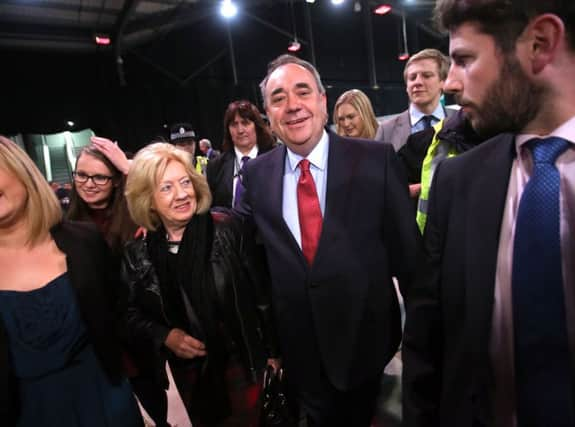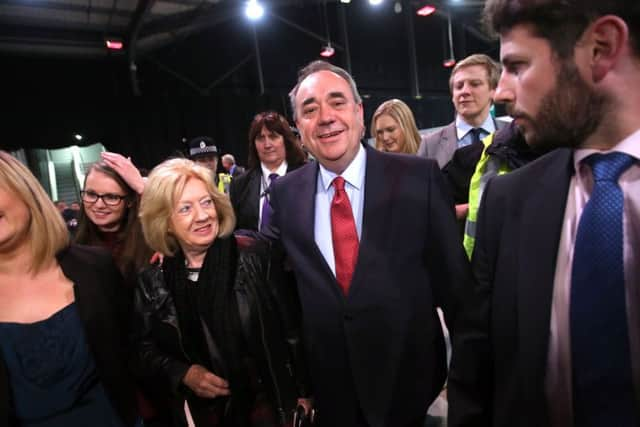SNP’s Alex Salmond set for Westminster after Gordon win


His election as the new MP for Gordon, winning the seat from the Liberal Democrats, sees him to return to the House of Commons - where he came to national prominence as a politician back in 1988 when he disrupted a Tory budget speech.
Mr Salmond, who had been elected as MP for Banff and Buchan in 1987, was expelled from the chamber and suspended from the Commons for a week, saying later that the incident took him from ‘’total nonentity to notoriety’’.
Advertisement
Hide AdAdvertisement
Hide AdIn his first spell as an MP, which lasted from 1987 to 2010, he was always one of a handful of SNP MPs.


But now, with a much larger group of Scottish nationalists to be returned to Westminster, he could have more influence than ever before in the corridors of Westminster.
Born in Linlithgow in 1954, Alexander Elliot Anderson Salmond was educated at Linlithgow Academy and St Andrews University, where he first joined the SNP.
Graduating with a degree in economics and history, he worked as an economist for both the Government Economic Service and the Royal Bank of Scotland before going to Westminster in 1987.
He became leader of the party for the first time in 1990, and when the Scottish Parliament was created in 1999 he also held a seat there, serving as leader of the opposition at Holyrood, while retaining his seat at Westminster.
But he stood down as SNP leader in 2000 and left the Scottish Parliament in 2001.
Returning as leader in 2004, he guided the SNP to a narrow Scottish election win in 2007 and then led a minority government as he became Scotland’s first SNP First Minister, with his wife Moira by his side.
That success was superseded in the 2011 election, when Mr Salmond led his party to an unprecedented victory, with a crushing defeat of its main rival and pre-election poll leaders Labour.
Advertisement
Hide AdAdvertisement
Hide AdThe majority win was even more impressive considering the voting system at Holyrood is essentially aimed at preventing such a result.
It meant the SNP’s manifesto pledge to hold an independence referendum could be delivered, and set in motion a chain of events which led to last year’s historic vote on independence.
The referendum campaign saw his political profile - which was already significant thanks to his fierce debating skills and outspoken attitude - rise considerably.
Hours after the result of that ballot was declared in favour of “No”, Mr Salmond held a press conference at his official residence, Bute House in Edinburgh, where he announced he would be standing down both as First Minister and SNP leader.
Mr Salmond said at the time he believed the party, parliament and country would ‘’benefit from new leadership’’.
Nicola Sturgeon, who had served as both deputy leader of the party and deputy first minister, was the only candidate to succeed him.
But in December last year the former first minister announced he planned to run for the Gordon constituency in the general election, saying it was “impossible to stand on the sidelines with so much at stake’’ for Scotland.